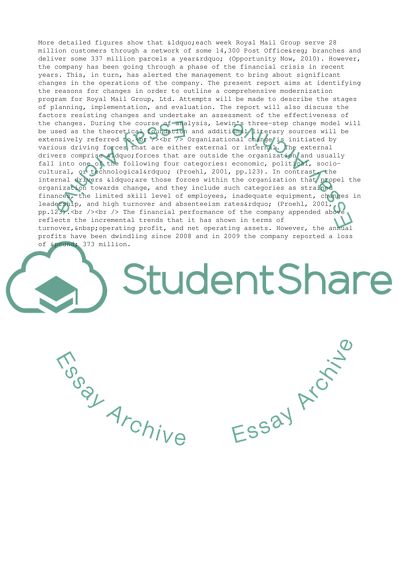Cite this document
(Royal Mail Group Ltd.: Examination and Evaluation of its Modernisation Case Study, n.d.)
Royal Mail Group Ltd.: Examination and Evaluation of its Modernisation Case Study. Retrieved from https://studentshare.org/business/1738033-current-change-management-practice-in-the-business-environment-of-the-early-21st-century
Royal Mail Group Ltd.: Examination and Evaluation of its Modernisation Case Study. Retrieved from https://studentshare.org/business/1738033-current-change-management-practice-in-the-business-environment-of-the-early-21st-century
(Royal Mail Group Ltd.: Examination and Evaluation of Its Modernisation Case Study)
Royal Mail Group Ltd.: Examination and Evaluation of Its Modernisation Case Study. https://studentshare.org/business/1738033-current-change-management-practice-in-the-business-environment-of-the-early-21st-century.
Royal Mail Group Ltd.: Examination and Evaluation of Its Modernisation Case Study. https://studentshare.org/business/1738033-current-change-management-practice-in-the-business-environment-of-the-early-21st-century.
“Royal Mail Group Ltd.: Examination and Evaluation of Its Modernisation Case Study”. https://studentshare.org/business/1738033-current-change-management-practice-in-the-business-environment-of-the-early-21st-century.


